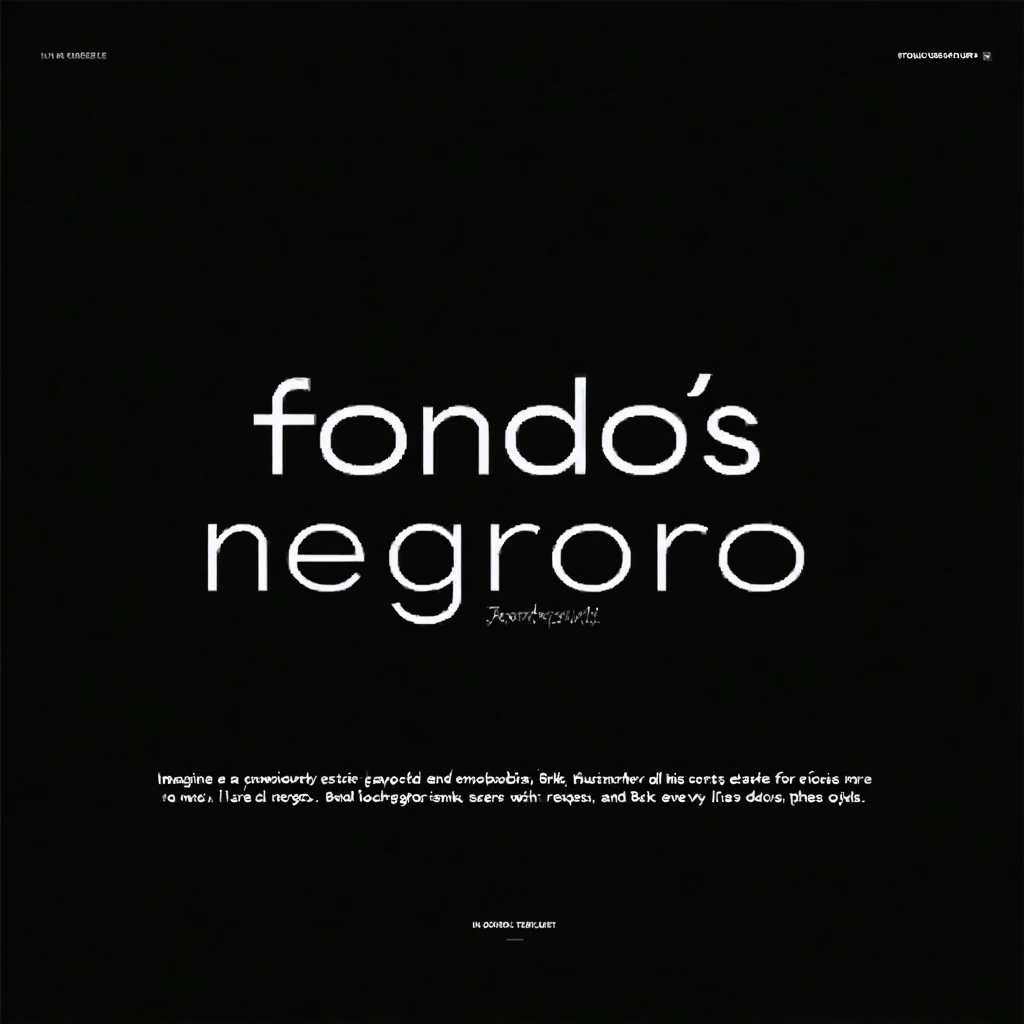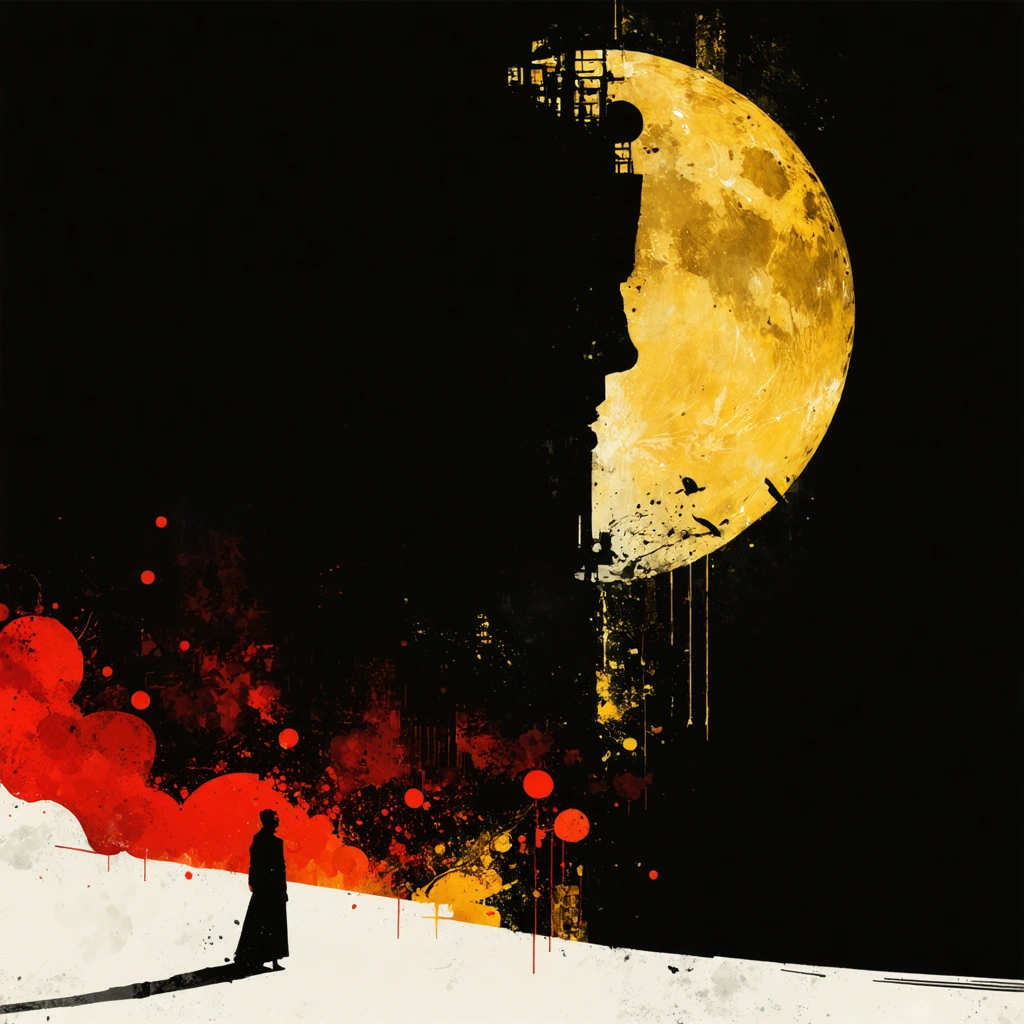
The Visual Dilemma: Why Color Choices Matter More Than Ever
Imagine you’re scrolling through a website at midnight. The glow of your screen isn’t harsh, but soothing, almost cinematic. The text stands out sharply, and the images pop with an intense vibrancy you didn’t expect. What just happened? Chances are, a fondo negro — a black background — is at work, transforming an ordinary digital experience into something strikingly elegant and immersive.
In today’s digital landscape, where attention spans are fleeting and visual noise is overwhelming, design choices can make or break user engagement. Yet, despite the explosion of color palettes, many designers still grapple with the question: which background color truly makes content shine? While fondo rojo (red background) and fondo amarillo (yellow background) offer their own energetic vibes, they often fall short when it comes to delivering that sophisticated, bold statement a fondo negro effortlessly achieves.
When Bright Colors Backfire: The Pitfalls of Red and Yellow Backgrounds
Bright backgrounds like red and yellow might seem like safe bets for grabbing attention. Red, with its fiery intensity, screams urgency and passion. Yellow shines with optimism and warmth. But these colors come with strings attached. Overuse or improper contrast can cause eye strain, reduce readability, and even provoke emotional fatigue.
- Red backgrounds can overwhelm users, triggering stress or distraction if the design isn’t balanced carefully.
- Yellow backgrounds, while cheerful, can become glaring and cause discomfort over prolonged viewing.
Moreover, these vibrant colors sometimes limit the creative expression of typography and imagery. They tend to clash with many hues, making it tricky to design harmonious interfaces. This is where fondos negros step into the limelight, offering a canvas that allows other elements to breathe and command attention without competing for it.
Why Fondos Negros Bring Drama and Elegance to Digital Design
Black backgrounds are more than just “dark mode” trends or minimalist aesthetics. They create a dramatic stage where every pixel gains significance. The high contrast between black and bright text or colorful images heightens visibility and reduces visual clutter. This subtle yet powerful effect is why many high-profile brands, art portfolios, and luxury product sites rely on fondos negros to elevate their digital presence.
Beyond the visual perks, black backgrounds also suggest sophistication, timelessness, and confidence. They invite users to focus, helping designers guide attention strategically. Plus, from a practical standpoint, dark backgrounds can reduce eye strain in low-light environments — a growing concern as our screens keep us glued for longer hours.
What This Article Will Explore
Over the course of this post, we’ll journey through:
- The psychological and aesthetic impact of fondos negros compared to fondo rojo and fondo amarillo.
- Practical tips for integrating black backgrounds into your digital projects without losing warmth or accessibility.
- Case studies showcasing successful designs that harness the bold elegance of dark backgrounds.
- Common challenges designers face with dark backgrounds and how to overcome them for maximum drama and usability.
If you’ve ever wondered whether a black background could revolutionize your digital design or if you’ve struggled to balance bold colors like red and yellow, this article will offer fresh insights and actionable guidance. Prepare to rethink your color strategy and embrace the drama that fondos negros bring to the table, making your work not only visually stunning but truly unforgettable.

Why are fondos negros (dark backgrounds) considered a powerful design choice in digital aesthetics?
Dark backgrounds, or fondos negros, have become a prominent trend in modern digital design due to their ability to add bold elegance and dramatic effect. The use of dark backgrounds creates a visually striking contrast that enhances the visibility of other design elements, such as typography, images, and colors.
From a psychological perspective, black or dark backgrounds evoke feelings of sophistication, luxury, and mystery. This emotional response is why many premium brands and creative portfolios opt for fondos negros to convey a high-end or artistic image.
Technically, dark backgrounds also reduce eye strain in low-light environments, which is why many apps and websites offer dark mode options. Additionally, on OLED and AMOLED screens, dark themes can save battery life by switching off pixels that display black.
Designers must thoughtfully balance contrast and readability when using fondos negros. For example, pairing dark backgrounds with light or vibrant text colors ensures clear legibility, while avoiding overly saturated neon tones that can cause visual fatigue.
How do fondos negros compare with other background colors like fondo rojo (red background) and fondo amarillo (yellow background)?
Each background color carries unique connotations and impacts user experience differently:
- Fondos negros: Convey elegance, drama, and sophistication. Ideal for portfolios, luxury brands, and digital art where focus and contrast are critical.
- Fondo rojo: Red backgrounds evoke energy, urgency, and passion. They are highly attention-grabbing but can be overwhelming if overused. Commonly found in sales promotions, call-to-actions, or warning messages.
- Fondo amarillo: Yellow backgrounds suggest optimism, warmth, and creativity. They brighten a design but require careful text contrast management to maintain readability.
Choosing between these backgrounds depends on the brand message, target audience, and context of use. For instance, a creative agency might use fondos negros to highlight their portfolio’s sophistication, while an e-commerce site might use fondo rojo to emphasize limited-time offers.
What are best practices for using fondos negros effectively in digital design?
To maximize the impact of dark backgrounds, designers should consider the following:
- Contrast and readability: Use light text colors like white, pastel tones, or muted hues to ensure content is easily readable against fondos negros.
- Accent colors: Add vibrant accent colors sparingly to create visual interest without overwhelming the viewer.
- Minimalism: Dark backgrounds work well with minimalist designs where negative space lets key elements stand out.
- Imagery: Use images with bright highlights or neon effects that pop against the dark backdrop.
- Accessibility: Test color contrast ratios to comply with accessibility standards, ensuring users with visual impairments can navigate easily.
Can combining fondos negros with colors like fondo rojo or fondo amarillo enhance digital aesthetics?
Yes, combining dark backgrounds with bold colors such as red or yellow can produce striking visual effects when done thoughtfully. For instance, a fondos negros design accented with fondo rojo elements can create a dramatic and urgent feel, perfect for highlighting calls to action or notifications.
Similarly, integrating fondo amarillo accents on a dark background introduces warmth and creativity, potentially making interfaces feel more inviting and energetic without sacrificing elegance.
However, balance is key—too much red or yellow on a black background can cause visual tension or fatigue. Designers often employ these colors in buttons, icons, or small decorative elements rather than large blocks of color.
Are there notable examples or case studies showcasing the effective use of fondos negros in design?
Several leading brands and platforms utilize dark backgrounds to great effect:
- Apple: Their product pages often use fondos negros to emphasize sleekness and modernity, making product images and white text stand out sharply.
- Spotify: The music streaming service employs dark themes to create an immersive listening experience, reducing screen glare while highlighting album art and controls.
- Portfolio websites: Many photographers and digital artists choose fondos negros to showcase their work with dramatic contrast, drawing viewer attention directly to the visuals.
These examples demonstrate how fondos negros can enhance brand storytelling by creating an atmosphere of elegance and focus.
How does the choice of background color affect user engagement and retention?
Studies indicate that background color significantly influences user perception and behavior. According to a 2022 survey by Adobe, websites with dark themes (fondos negros) saw a 15% increase in user engagement time compared to bright backgrounds, attributed to reduced eye strain and enhanced content focus.
Conversely, colors like fondo rojo can boost click-through rates on call-to-action buttons by creating a sense of urgency, while fondo amarillo is effective in evoking positive emotions that encourage exploration.
Ultimately, combining these insights allows designers to craft visually compelling experiences that align with user expectations and brand goals.

